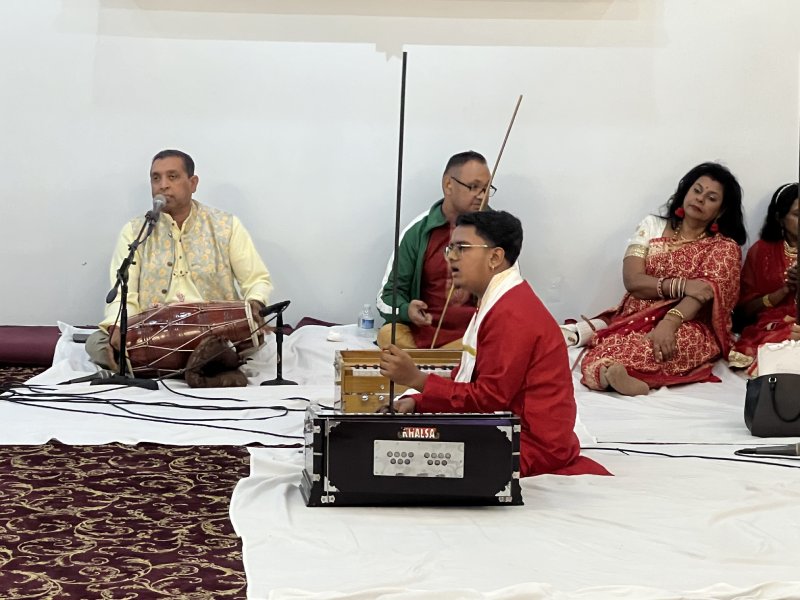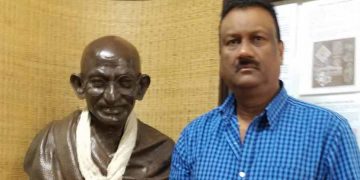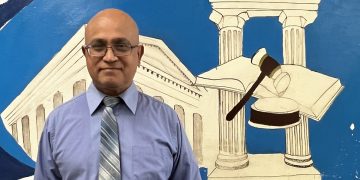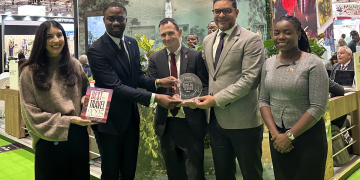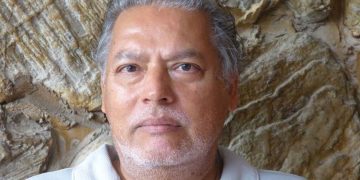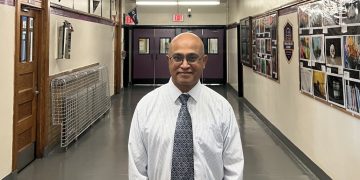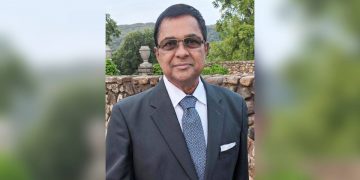New York based Indo Caribbean Hindus and those settled in other American states as well as elsewhere in the diaspora are observing the auspicious Navratri festival that has been transplanted from Guyana into USA. It is among the holiest periods for Hindus when they engage in fasting and worshiping.
Navratri is nine nights of observance (prayers) of the feminine aspects of the lord, the annual period of fasting that pays obeisance to the universal mother. Some individuals fast for the entire period while others fast on particular days of their choosing. The fasting may continue days later for the more devout.
Navratri comes right after the two weeks period of Pitri Paksh observance (paying reverence to Jamraj) that is preceded by ten days of Lord Ganesh festival. Guyanese and other Indo-Caribbean Hindus in New York and other locations in America observed these festivals with many fasting during (on different days or the entire period) this very religious period on the Hindu calendar. Guyanese and other Caribbean Hindus have helped to institutionalize this and other religious festivals in parts of America where they have settled. They receive support and recognition from American politicians in exchange for votes and or campaign funding.
Navratri comes from nav which means nine and ratri means night. Navratri worshipping involves making offerings in the morning and evening during the period. It is a festival that is mainly celebrated during the night with prayers and a discourse that also includes invocation of mantras from the spiritual texts and kirtan choral singing as well as loud traditional music.
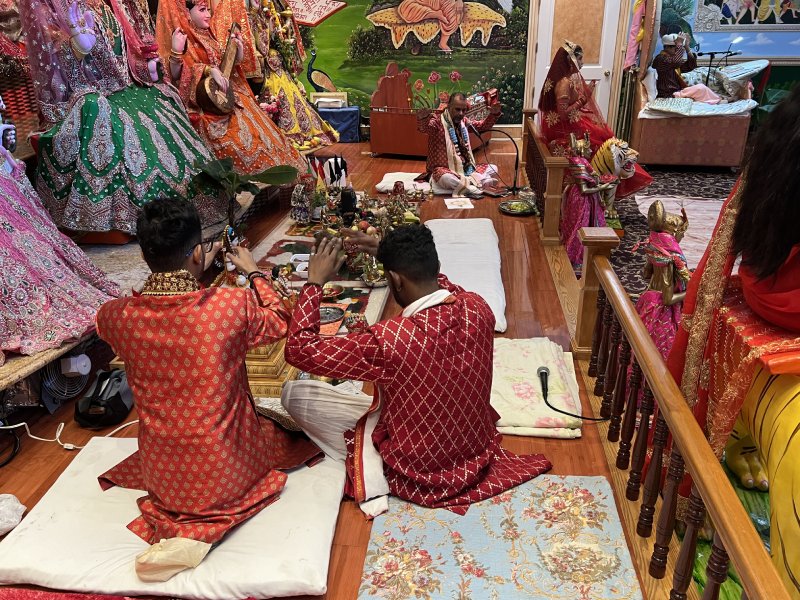
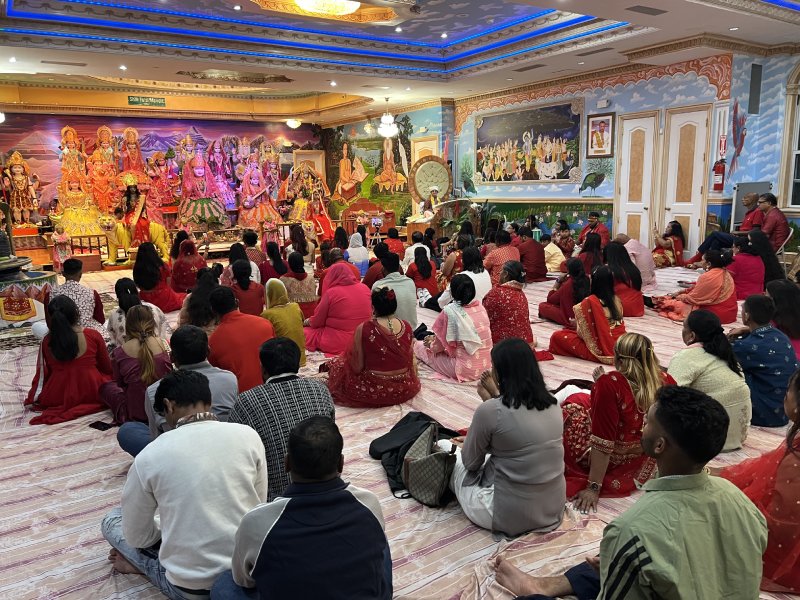
The Navratri festival began on October 3 and will conclude on Oct 11. The observance will extend on Vijay Dashmi (10th day) and into the Dussehra celebration on October 12. Dussehra means tenth day. The Ramleela celebrations are associated with this period and some temples are holding such celebrations. Such plays are common in Guyana, Trinidad, and Suriname and throughout India. Dussehra, tied to Ram Leela, symbolizes the conquest of good over evil. Navratri is among the holiest periods in the Hindu calendar that was accompanied with people fasting, visiting mandirs, and performing pujas as well as inviting pandits to conduct special services at their home. People fasted during this period focusing on purification of the minds and bodies. It us a period when Hindus perform special puja at home officiated by one or more Pandits. Many Guyanese conducted such pujas at home.
Many of the near one hundred Indo Caribbean temples in the NY area and throughout America are holding nightly discourses on the occasion; all mandirs will hold discourses and puja on the final night on October 11.
Navratri is associated with the propitiation of the feminine aspects of the Almighty. As Pandit Vishnu Panday of Peter Hall Mandir pointed out, during this period, people tend to pray with great fervour and devotion. Of the nine nights, three each are focused on Goddesses Durga, Lakshmi, and Saraswatee. Each Goddess is worshipped for three nights to offer protection (Durga), provide wealth (Lakshmi) and guide the devotee to knowledge (Saraswati) respectively. Durga Hinduism gives equality to the Goddesses and Gods, clearly illustrating that Hindus do not discriminate among the sexes. Hindus pay obeisance to both male and female murthis representing their God or Goddess. Hindus believe they all represent the same one almighty God or Goddess who take different appearances for different purposes and came on earth at different times with different names to model an appropriate lifestyle for humans.
At the mandirs, devotees were observed dressed in traditional colourful attire. Queens is inundated with dozens of mandirs. The Bronx and Brooklyn and neighboring New Jersey also has several Guyanese or Trinidadian mandirs. Pandit Rajin Balgobind of New Amsterdam is currently holding nightly service under a massive tent at the Cheddi Jagan, Pandit Ramlall Ground on 133rd Street, off Liberty Ave, in the heart of the Indian Guyanese and Indian Caribbean American community . Hundreds graced the nightly sessions since it began last Thursday evening. That site served for continuous Hindu religious programs since mid August beginning with the annual Ramayana in the Park (Richmond Hill sessions). There was a similar Ramayana in the Park in Jamaica, Queens, at the ground of the Surya mandir on 172nd Street off Jamaica Ave.
There are two celebrations of Navratri – each associated with the changing seasons in India, one in Spring and one in Fall. The famed Lord Rama is associated with Navratri — his appearance, disappearance and reappearance of Ram in the holy city of Ayodha. In the spring Navratri, Hindus celebrate the birth or appearance of Lord Rama, and in the fall, Hindus celebrate the destruction of the evil Ravana by Lord Rama, signifying the triumph of good over evil which is also called Dussehra. Celebrations are planned by Guyanese and other Hindus all over NY for Dussehra which is a traditional a bonfire festival.


